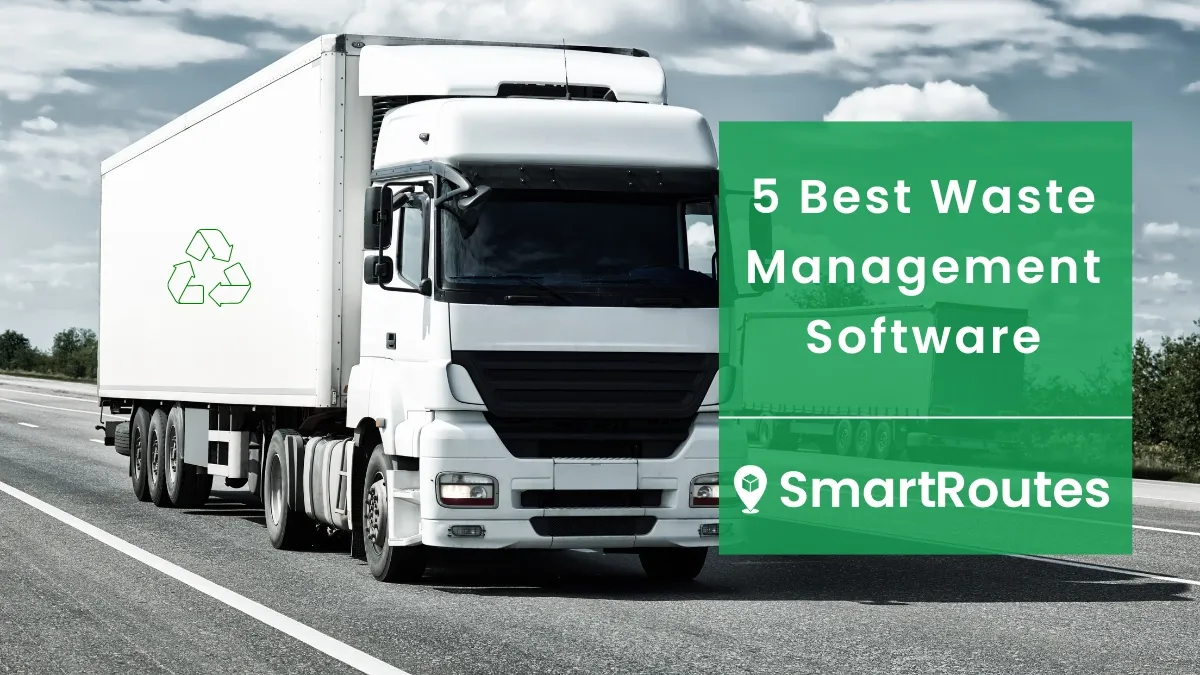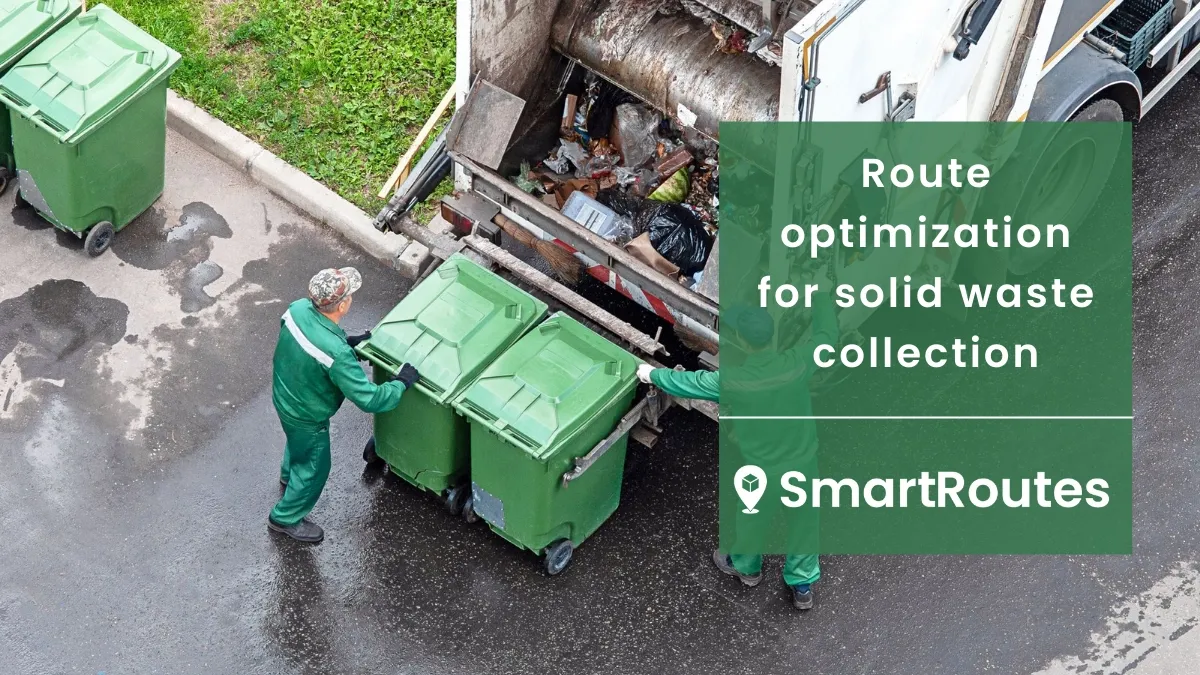Dynamic Route Planning for On-Demand Waste & Recycling Collection
In this blog, we take a close look at the benefits of dynamic route planning for this industry.
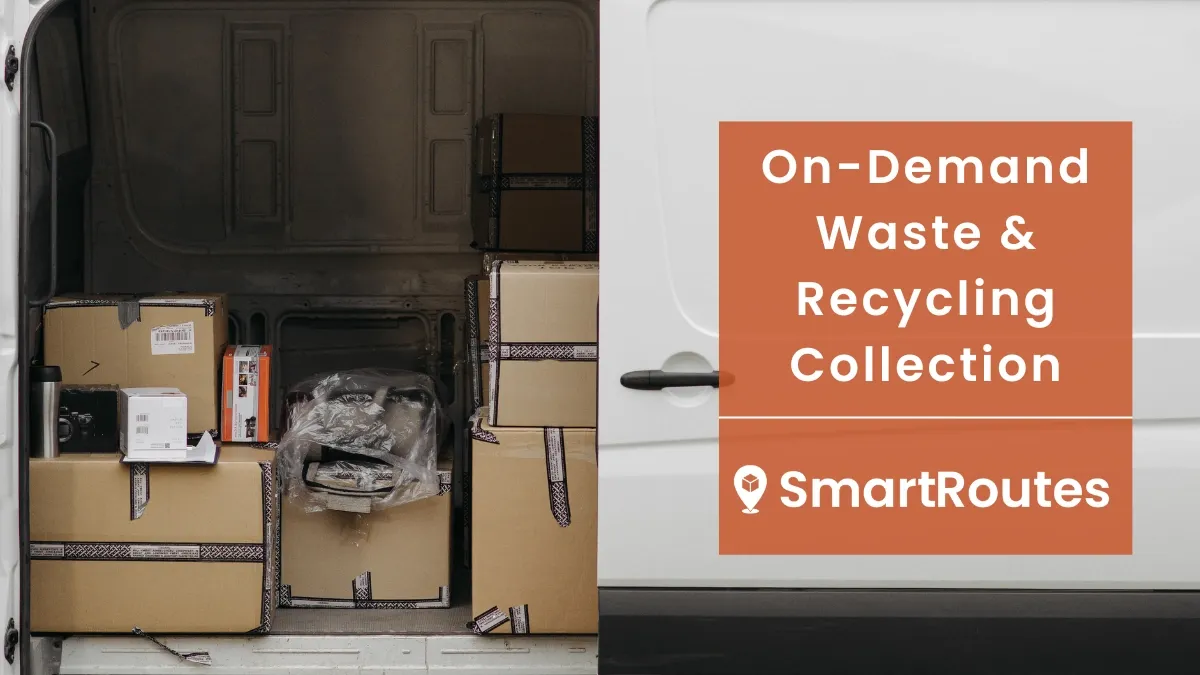
On-demand waste collection poses a unique challenge for planners due to its dynamic and ever-changing nature. Unlike traditional residential bin collection, where routes are static and schedules are predictable, on-demand services require planners to adapt to varying demands each day. Manual planning, often done by inputting stops into conventional mapping tools like Google Maps, can lead to inefficiencies and time-consuming processes.
Fortunately, leveraging technology can significantly streamline and optimize the route planning process, making it more efficient for on-demand waste and recycling collection services.
In this blog, we will take a closer look at the difference between on-demand waste collection and residential bin collection plus the benefits of dynamic route planning for this industry.
The Difference Between On-Demand Waste Collection and Residential Bin Collection
On-demand waste collection, as its name implies, is flexible and offers users the flexibility to schedule waste collection at their convenience. On-demand collections involve drivers entering yards or buildings for pickups, requiring access to contact details and the potential for photo proof of delivery. Moreover, the on-demand collection landscape is characterized by the varied nature of the items being collected and often entails the disposal of different types of materials, including bulky items or those requiring specialized handling. This diversity necessitates a fleet of vehicles with varying specifications to accommodate the unique demands of each collection. Some on-demand waste collection services may include the repair and resale of items, adding another layer of complexity to the fleet management process.
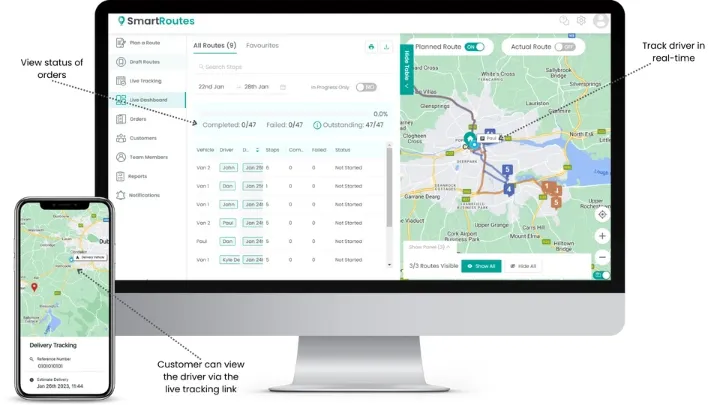
Whereas this contrasts with the standardized process of residential bin collection. Residential bin collections typically cover a more concentrated area with bins left curbside, resulting in shorter distances between stops. The concentrated nature of these routes allows for efficient planning with shorter distances between stops. In contrast, on-demand services may cover a broader and more dispersed area, requiring a strategic approach to route planning that factors in the potential for greater distances between service locations.
In essence, the key distinction lies in the dynamic nature of on-demand waste collection, responding to the unique requirements of each service request, as opposed to the more structured and localized approach of residential bin collection.
SmartRoutes Route Planning Software
Streamline your entire delivery process, all from one platform

Dynamic Route Planning for On-Demand Waste & Recycling Collection
Efficient route planning is crucial for optimizing on-demand waste collection services. This approach minimizes travel distance, maximizes vehicle capacity, allows real-time route adjustments, and accounts for factors such as distances between stops and required time at each location. Additionally, the inclusion of different types of delivery vehicles in the fleet, each with unique constraints, adds complexity to route planning. Dynamic route planning software becomes indispensable in ensuring that these factors are considered and routes are adjusted on-the-fly to meet changing demands. Implementing dynamic route planning for on-demand waste and recycling collection offers a wide range of benefits:
More Accurate Information for Drivers
Real-time updates offer drivers invaluable insights into evolving road conditions, unexpected traffic congestions, or any sudden changes in customer requests. With this information at their fingertips, drivers can make informed decisions on the fly, adapting their routes to avoid delays and optimize their travel time. For example, if a particular route becomes congested due to road closures or heavy traffic, drivers can swiftly reroute to avoid delays, ensuring timely pickups. In addition to real-time updates, optimized routes play a crucial role in streamlining driver efficiency. By leveraging advanced route planning algorithms, drivers are provided with the most efficient and cost-effective routes tailored to their specific schedules and constraints. These optimized routes take into account various factors such as traffic patterns, distance between stops, and time windows, ensuring that drivers can maximize their productivity and minimize unnecessary travel time.
Moreover, real-time updates enable drivers to proactively communicate with customers, providing accurate Estimated Time of Arrival (ETAs) and notifying them of any unforeseen delays. This level of transparency enhances customer satisfaction and builds trust, as customers are kept informed every step of the way, reducing frustration and uncertainty.
Increased Driver Capacity
Optimizing routes equips drivers with strategically planned schedules that minimize unnecessary travel time and maximize the efficiency of each trip. By utilizing advanced route planning algorithms and real-time data, routes can be optimized to ensure that drivers are following the most efficient paths between stops.
As a result of these optimized routes, drivers can complete their routes more quickly and efficiently, allowing them to service a greater number of locations within the same timeframe. This increased productivity translates directly into higher driver capacity, as drivers can accommodate more collections throughout the day.
Reduced Fuel Usage
Efficient route planning utilizes advanced algorithms and real-time data to optimize the sequencing of stops and minimize unnecessary travel between locations. By identifying the most direct and fuel-efficient paths, waste collection companies can ensure that drivers are covering the shortest possible distances while still servicing all necessary stops.
Minimizing travel distances not only saves time but also conserves fuel by reducing the amount consumed during each trip. This reduction in fuel consumption translates directly into cost savings for waste collection companies while simultaneously lowering their carbon footprint and environmental impact.
Less Time Spent on Manual Planning
Traditionally, route planning for waste collection services involved labor-intensive manual processes, such as inputting stops into mapping software, like Google Maps, and manually adjusting routes based on various factors like traffic patterns and customer requests. However, with the advent of advanced route planning software and algorithms, much of this process can now be automated.
By leveraging technology, waste collection companies can automate many aspects of route planning, including the optimization of sequencing, allocation of stops to drivers, and consideration of factors like traffic congestion and delivery time windows. This automation significantly reduces the time and effort required for planners to develop and adjust routes, allowing them to focus their expertise on higher-level strategic tasks. With automation, planners can quickly generate optimized routes with a few clicks, rather than spending hours manually analyzing and adjusting routes. This not only saves time but also reduces the potential for human error, ensuring that routes are consistently optimized for efficiency and accuracy.
Customer Notifications and Accurate ETAs
Customer notifications provide timely updates and transparency throughout the waste collection process, keeping customers informed every step of the way. These notifications can include confirmation of service requests, reminders about upcoming pickups, and alerts about any delays or changes to scheduled appointments. By proactively communicating with customers, waste collection companies demonstrate professionalism and reliability, building trust and confidence in their services.
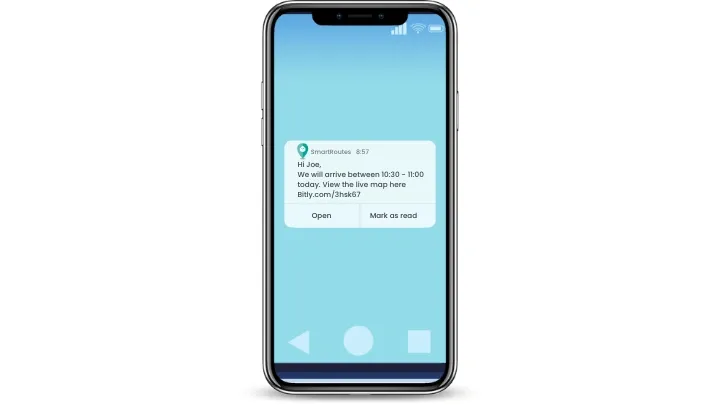
Accurate ETAs play a crucial role in managing customer expectations and minimizing inconvenience. By providing customers with precise arrival times, waste collection companies enable them to plan their day more effectively and ensure that someone is available to facilitate the pickup. This reduces the likelihood of missed appointments or delays, enhancing overall customer satisfaction and loyalty.
Optimized Vehicle Capacity
Dynamic route planning software takes into account various factors such as the size and capacity of each vehicle, the volume of waste at each stop, and any specific constraints or requirements for different types of waste. By analyzing this data in real-time, the software can optimize the allocation of stops to vehicles, ensuring that each vehicle is fully utilized and loaded to its maximum capacity.
Maximizing vehicle capacity is essential for waste collection companies to minimize the number of trips required to service all stops on a route. By consolidating stops and efficiently organizing the sequencing of pickups, dynamic route planning software reduces the overall mileage and fuel consumption associated with waste collection operations.
Better Service
Timely pickups are a key aspect of delivering exceptional service to customers. By adhering to optimized routes and schedules, waste collection companies can ensure that pickups occur within the specified time windows, minimizing inconvenience for customers. Consistent and reliable pickups contribute to customer satisfaction and loyalty, as customers can rely on the waste collection company to consistently meet their needs.
Improved customer communication plays a crucial role in enhancing the overall service experience. Waste collection companies can leverage technology to provide customers with real-time updates and notifications regarding the status of their service requests, including confirmation of pickups, reminders about scheduled appointments, and alerts about any delays or changes to the schedule.
Proof of Delivery
Proof of delivery plays a vital role in providing evidence of completed pickups, establishing a clear record of the transaction between the waste collection company and the customer. Signatures obtained from customers at the time of pickup serve as acknowledgment of receipt, confirming that the waste collection service has been completed.
Photos taken at the time of pickup serve as visual evidence of the condition of the waste at the point of collection. By capturing images of the waste materials and their surroundings, waste collection companies can provide additional context and clarity in the event of disputes or discrepancies. For example, photos may be used to verify the quantity and type of waste collected, document any damage or contamination present, or demonstrate adherence to safety protocols and regulations.
Conclusion
By harnessing the power of advanced algorithms and real-time data analysis, on-demand waste and recycling collection businesses can optimize routes and better meet evolving customer preferences. By streamlining route planning processes and minimizing travel distances, waste collection companies can reduce fuel consumption, vehicle wear and tear, and labour costs, resulting in significant bottom-line savings. Try out SmartRoutes with our 7-day free trial and experience the transformative benefits of dynamic route planning firsthand, without any commitment or upfront investment.
Frequently asked questions
1. How does dynamic route planning accommodate last-minute changes or additions to the pickup schedule?
Dynamic route planning software allows for real-time adjustments to routes, enabling waste collection companies to easily accommodate last-minute changes or additions to the pickup schedule. Planners can quickly reroute vehicles and allocate new stops as needed, ensuring that service requests are addressed promptly and efficiently.
2. How does route planning software optimize routes to minimize fuel consumption and reduce environmental impact?
Route planning software analyzes various factors such as time windows, distance between stops, and vehicle capacity to generate the most fuel-efficient routes. By minimizing travel distances and optimizing vehicle loads, waste collection companies can reduce fuel consumption and minimize their environmental footprint.
3. How can waste collection companies measure the impact of dynamic route planning on their operations?
Waste collection companies can measure the impact of dynamic route planning on their operations by tracking key performance indicators such as fuel consumption, vehicle utilization, driver productivity, and customer satisfaction. By comparing data before and after implementing dynamic route planning software, companies can quantify the benefits and make informed decisions about their waste management strategies.
If you enjoyed this blog, you might also be interested in:
